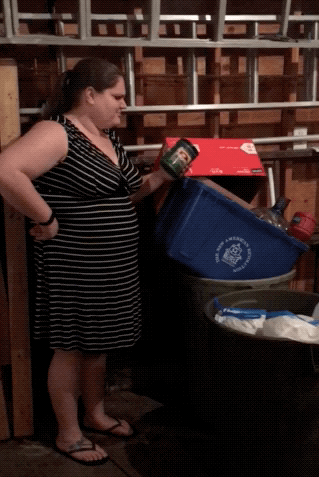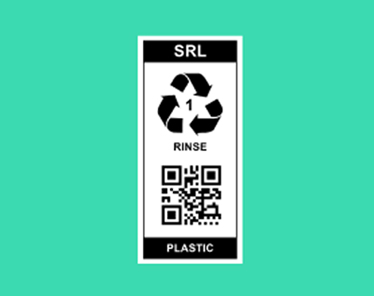
Background:
This was a four week class project (Design Lab: Users – Spring 2017). I chose the topic of improper recycling in the US.
Problem: Improper Recycling
- Unprocessable items contaminate recyclables. They include:
- Plastic bags
- Garden hoses
- Bowling balls
- Styroform
- Pizza boxes with grease stains
- And much more!
- 25% of items recycled by households and businesses are contaminates
- Contaminates cause machinery in facilities to break down and can slow the sorting process
- Batches of recycled material are ruined when 10% of bales have contaminated products
- Items accepted depend on the material recovery facility (MRF)
- This can lead to uncertainty about what can be recycled
- Signage on recycling bins can be confusing:
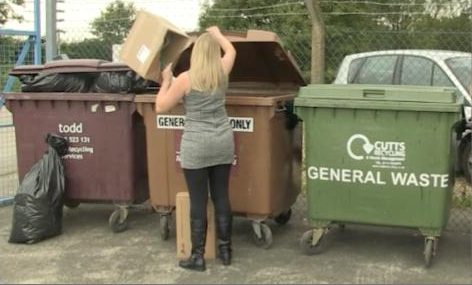
The green bin says “Recycling”, but also “General Waste”.
Value in Recycling Properly:
- Keeps costs down for MRFs and allows them to process more material
- Reduces waste in landfills
- Current Recycling Rate is 34%
- Conserves energy and natural resources
- 95% less energy spent on manufacturing recycled aluminum cans than from unrefined materials
Personas
I created three personas based off the synthesis of five user interviews conducted.
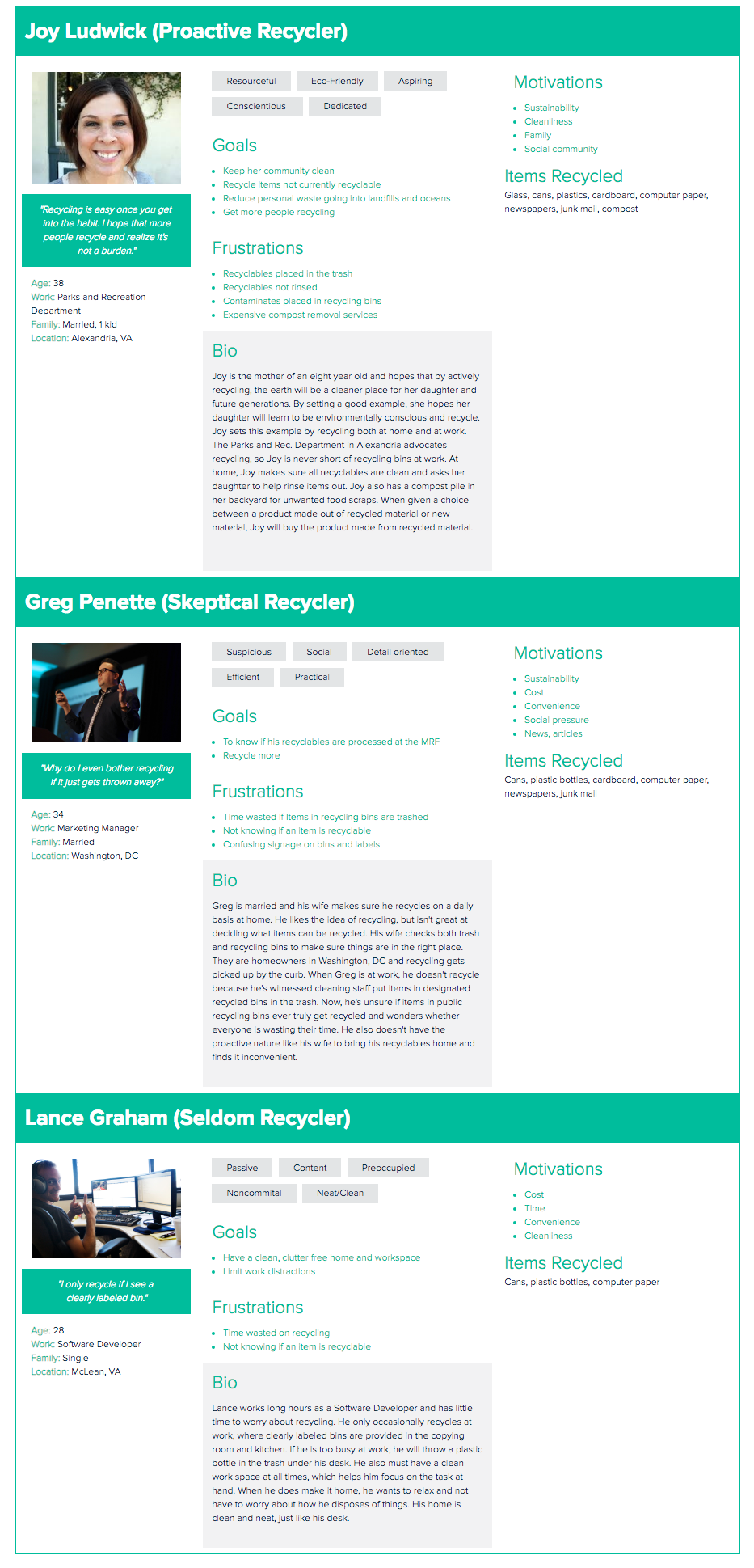
Recyclers Need:
A solution that makes recycling…
- Convenient
- Affordable
A solution that provides guidance and up-to-date information on what can be recycled.
A solution that is straightforward and reassures them that their items are being recycled.
White Space:
There currently isn’t a solution to track recycled items.
Proposed Solution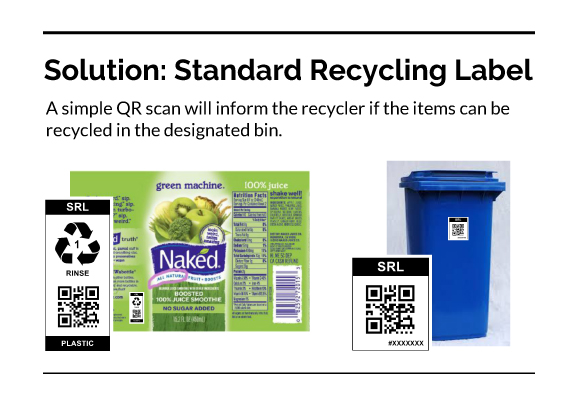
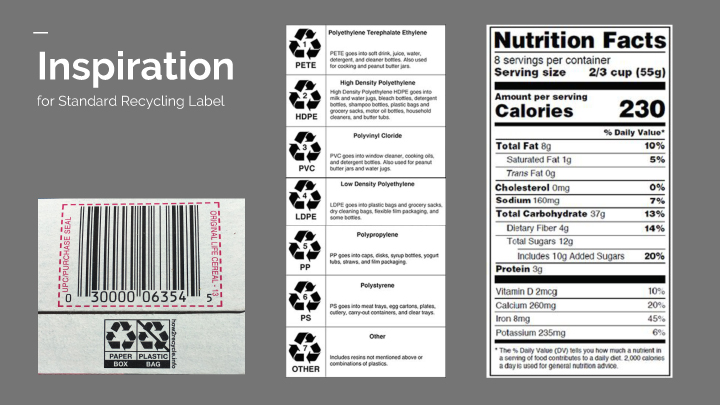
My proposed solution would be a QR labeling system and app that keeps track of your recyclables. Similar to the nutrition and plastic category labels, it would be a requirement to place the SRL label on packaged goods. Likewise, recycling removal services would be required to place a QR code on the recycling bins they provide to households and businesses. Using the SRL app, you can scan the product and the bin to see if the item can be recycled. This avoids confusion over whether an item is actually a recyclable material and gives you real time information. The app will also let you know when the removal service has picked up your recyclables. This would require the removal services to scan the bins once they are cleared. In an ideal world, it would be nice to track if the items sent to the facility get recycled, but the sorting process would be slowed down if each item was scanned and thus, hinders the process. The app would also track the amount you recycled over time and you can see stats on how you’ve helped the environment. By providing real time information, this ensures that items thrown in the recycling bins are items that can be recycled at the facility they’re going to and further speeds up the sorting process at the facility with less contaminates.
If a recycler does not want to download the app, they could use a regular QR scanning app which brings them to the responsive SRL site. This site shows them if an item can be recycled or not. However, the site wouldn’t have the added features the app provides.
Solution in Action
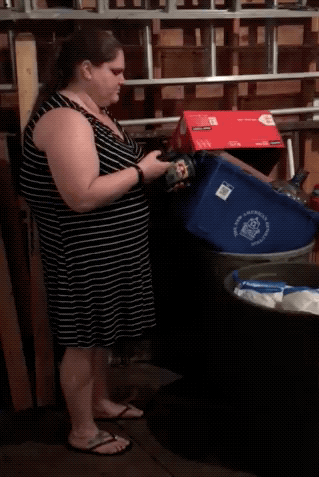
Why a QR Code?
- Cheap to produce
- Scanning is a faster input method
- Our mobile devices are constantly on us
- ~35% of smartphone users scanned one in the past year
- Majority male
- 25-34 years old
Note: If smart phones had a QR scan function to replace scanning apps, it might encourage more usage.
Key SRL App Screens
The following screens are medium fidelity:
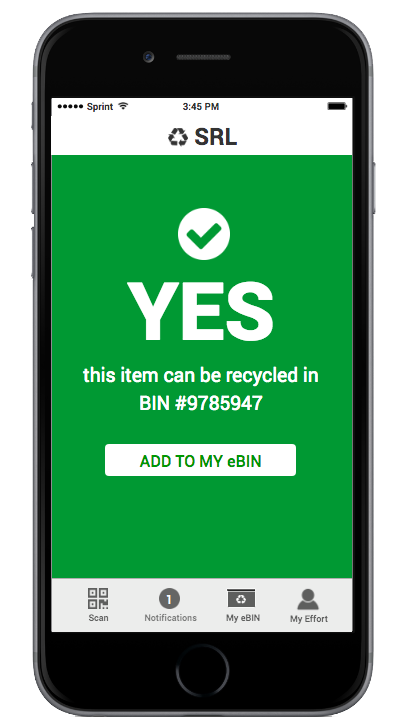
Confirmation Screen
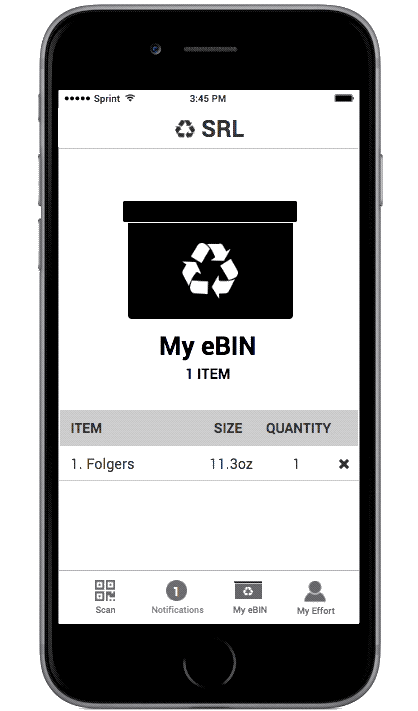
My eBIN Screen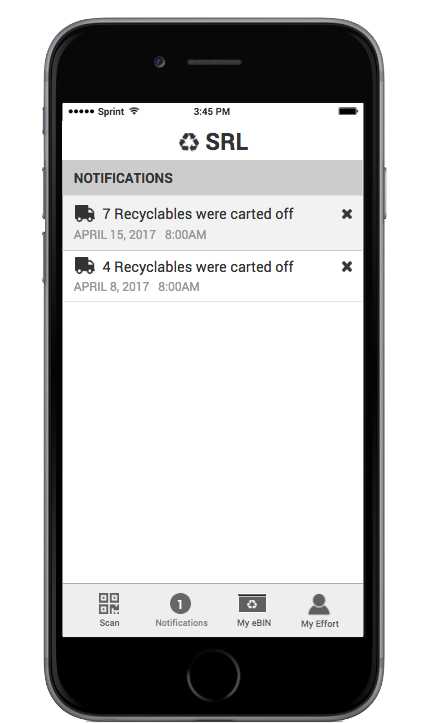
Notifications Screen 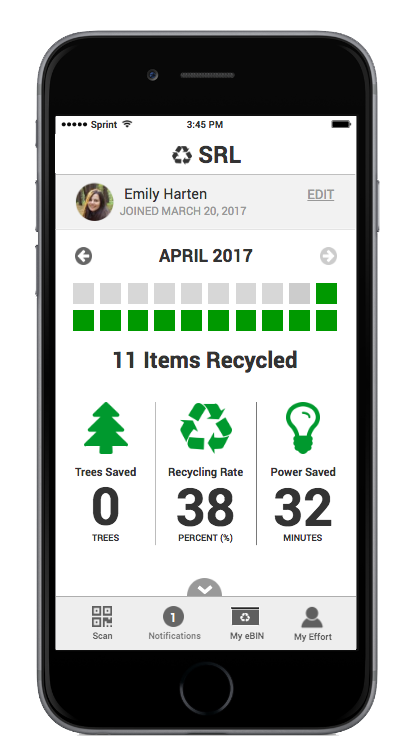
My Effort Screen
Proposed Benefits of the SRL App
- Saves bins, dumpsters, and MRF locations
- Tracks whether items were picked up by removal services
- Keeps track of recycled items (i.e. “carted off”)
- Disburses recognition badges that would display on “My Effort” screen
Solution Requirements
- Work with the FTC & FDA to make the SRL a requirement on packaging (i.e. Fair Packaging & Labeling Act)
- Convince the EPA to regulate and fund the system
- Partner with How2Recycle to set up labels
- Create and maintain a database with all products
Solution Drawbacks
- Can’t track items at MRF
- Sorted by hand (See video)
- Scanning items would increase sorting time
- Process reliant on smart phones, QR readers, data, & Wi-Fi
- Long approval process for mandatory government labeling
Methods of Future User Testing
Objective: To discover any problem areas with the site and/or labels.
- In-person (offline)
- Testing a low fidelity, mobile prototype
Test Structure
- Quick survey for demographic/usage questions (Survey Monkey)
- Perform Tasks on Prototype:
- Find content
- Scan items
- Impression/Concluding Questions
After initial testing, site color palette would need to be tested.
Project Management Scope
- Building an app and site along with a labeling system that helps reduce improper recycling
- Time Allotted for User Testing: 4 weeks
- 4 American regions (Northeast, South, Midwest, West Coast)
- 20 interviews per region
- 3 days per region, ~7 interviews per day (45min/interview)
- Target Audience: Americans (Male & Female), Age: 25-40
- Value to Business: Get more people recycling properly
- Reduces recycling costs
- Protects the environment
- Content:
- Database for items’ status (Source: EPA, Product Companies, & MRFs)
- Stat generator to determine “My Effort” numbers
- Recycling removal services need to scan bins when picking up items
- Similar Product: How2Recycle label doesn’t verify if an item is accepted at a local MRF. However, the label gets important information across.
Desired Results
- Increase national recycling average
- Decrease amount of contaminants
- Reduce suspicion around recycling
- Have more informed recyclers
